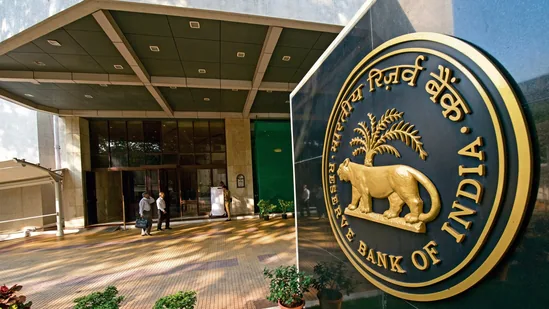Abuse of dominance: An analysis of CCI order in Google case
[By Aneesh Raj & Chirantan Kashyap ] The authors are students of National Law University and Judicial Academy, Assam. Introduction The world’s biggest search engine has received a great shock from the country’s top court. The Supreme Court of India has rejected Google’s petition challenging the NCLAT ruling dated January 4, 2023. The Competition Commission of India (hereafter CCI) fined Google a large sum for abuse of dominance. Google sought remedy from the NCLAT initially, but once they refused, it turned to the Supreme Court of India for relief; however, this court also refused to entertain its petition. Aggrieved by the decision of the court, Google has agreed to comply with the order of CCI and to deposit the 10% penalty amount. The CCI has levied a fine of over ₹ 1337 crore on Google for abuse of its dominant position in India’s smartphone operating system market. Google, in its appeal, has termed the decision of CCI as “patently erroneous” and ignoring “the reality of competition in India, Google’s procompetitive business model, and the benefits created for all stakeholders.” The CCI order has been described as “fraught with substantive, analytical, and procedural errors, including inter alia ignoring exculpatory evidence and statements from Indian OEMs and developers.” Google has also accused the CCI’s investigating arm, namely the Director General’s Office, of mindlessly copying and pasting the order from the foreign authorities. The aim of this article is to analyse the order and also explain what it means for the general population. Facts of the case: The controversy arose following the disclosure of information by Mr. Umar Javeed, Ms. Sukarma Thapar, and Mr. Aaqib Javeed under Section 19(1)(a) of the Competition Act, 2002 (hereinafter the “Act”), alleging that Google LLC and Google India Private Limited (collectively, “Opposite Parties”/”Google”) violated Section-4 of the Act. It is believed that these informants are Android smartphone users. They had said in their submission that Android is an open-source mobile operating system that anyone may create and use freely. The Android Open-Source Project (AOSP) is the source code for Android that is subject to a basic licence. An interesting point that is stated by the informants is that the smartphones and tablets in the Indian market are being run on the Android operating system, which itself is being developed by Google. Google also offers various applications and services in the form of Google Mobile Services (GMS). Informants have described GMS as a suite of Google services that can be used to enhance a device’s performance. According to the experts, GMS includes a variety of Google services that can only be accessed through GMS and not downloaded independently by device manufacturers. These services include Google Maps, Gmail, and YouTube. Android device manufacturers must enter into certain agreements with Google before these apps and services can be installed. The informants further stated that end users would not be able to directly use these services. According to the informant, Google has been engaging in a number of anticompetitive practices, both in the core market and in peripheral areas, in order to further solidify their dominant position as the preeminent provider of online general web search services and online video hosting platforms (through YouTube). The informants made the following allegations against Google in their claims: Google requires that manufacturers of smartphones and tablets only pre-install Google’s apps or services if they want to get any part of GMS in smartphones made, sold, exported, or marketed in India. It was said that this action made it harder for rival mobile apps or services to develop or get into the market, therefore violating Sections 4 read with section 32 of the Act. Google combines or bundles various Google applications and services, such as Google Chrome, YouTube, Google Search, etc., with additional Google applications, services, and/or application programming interfaces. This conduct made it harder for people to get smart mobile devices that used different, possibly better versions of the Android operating system. Google doesn’t let smartphone and tablet makers in India make and sell “Android forks,” which are different versions of Android for other devices. This regulation made it harder for people to get access to new, smart mobile devices that might run on better versions of the Android operating system. Based on the information received, the commission forms a prima facie opinion that there is a contravention of Section 4 of the Act. So, using its power under Section 26(1) of the Act, it directed the investigating arm, which is the office of the Director General (DG), to do an investigation. Based on its investigation, the DG submitted a report addressing certain issues highlighted by Google. Investigation by the DG: An investigation was laid out by the office of the director general in order to gather material. The office of director general contacted Google and other concerned parties. Other parties include mobile phone makers (both Indian and foreign brands), who install Android OS and Google apps and services on their phones; third parties active in the Indian market for Android OS app stores, an online general web search service, and a web browser; key players in the online video hosting platform; key Indian app developers, etc. Based on the said investigation, five relevant markets have been identified as being important to the resolution of the challenges at hand. These are the markets in India for licensable operating systems for smart mobile devices such as smartphones and tablets, the market for an app store for Android smart mobile OS, the market for general web search services, the market for non-OS-specific web browsers, and the market for an online video hosting platform (OVHP). As previously indicated, the DG has determined that Google dominates the aforementioned key markets. While compiling the investigation report, the DG also took into account the other apps and services that are considered core apps under Mobile Application Distribution Agreement (MADA). After examining the conduct of Google, the office of the director general reaches the conclusion that preinstallation of the whole GMS suite
Abuse of dominance: An analysis of CCI order in Google case Read More »









